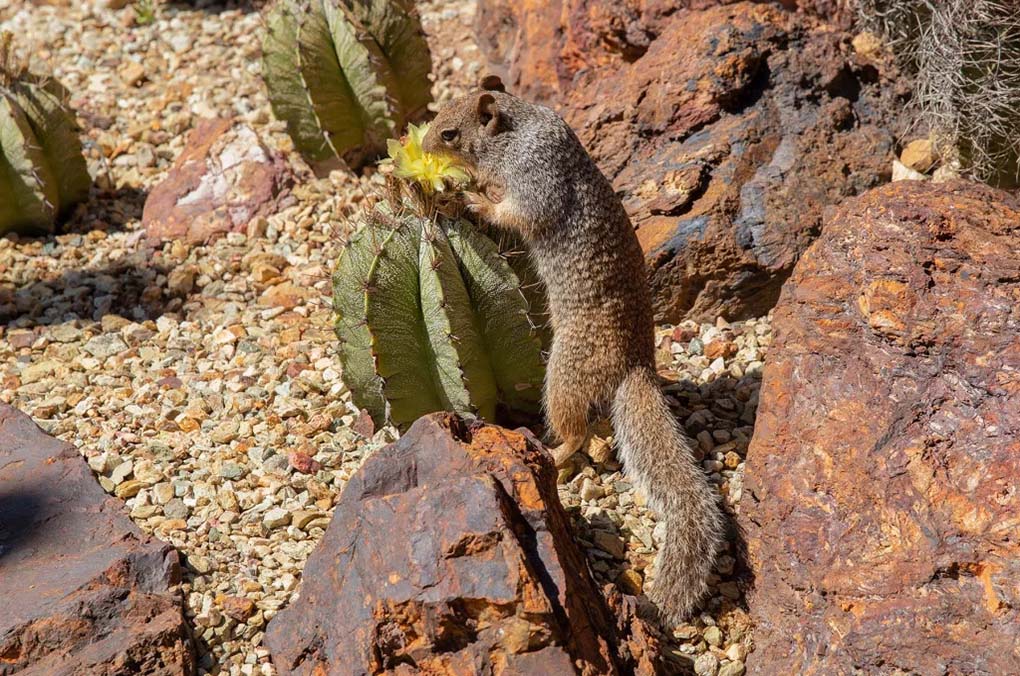
Wildlife Watching in Phoenix: A Guide to the Valley of the Sun’s Natural Wonders
Phoenix, Arizona, may be best known for its dramatic desert landscapes and bustling city life, but it’s also a haven for wildlife enthusiasts. The Valley of the Sun boasts an array of habitats, from arid deserts to lush riparian areas, each supporting a diverse array of wildlife. As an avid traveler and nature lover, I was eager to immerse myself in the natural beauty of Phoenix and discover its hidden wildlife treasures. This guide will take you through some of the best spots for wildlife watching in Phoenix, provide practical tips for a successful experience, and share my personal encounters with the region’s fascinating fauna.
1. Desert Botanical Garden: A Haven for Desert Species
Location: 1201 N Galvin Pkwy, Phoenix, AZ 85008
My journey into wildlife observation began at the Desert Botanical Garden, a 140-acre sanctuary that beautifully showcases the unique flora of the Sonoran Desert. Although the garden primarily highlights desert plants, it is also an important habitat for a variety of desert-dwelling creatures.
As I strolled through the garden’s meticulously curated trails, I was immediately drawn to the vibrant birdlife. The Gilded Flicker, a striking woodpecker with a golden belly and black spots, flitted among the saguaro cacti. The Cactus Wren, Arizona’s state bird, was another highlight with its distinctive call and charming behavior. The garden’s diverse plant life, including palo verde trees and blooming cacti, provides essential shelter and food sources for these avian residents.
A particularly memorable experience was encountering the desert tortoise. The Desert Botanical Garden is involved in the conservation of these ancient reptiles, and the dedicated tortoise habitat allowed me to observe these fascinating creatures up close. The slow-moving tortoises were enjoying the warm desert sun, and I marveled at their impressive adaptation to the harsh desert environment.
The garden also hosts seasonal events like Twilight Tuesday, where guided tours offer in-depth insights into the local wildlife and their adaptations. These tours are an excellent opportunity to learn more about the garden’s fauna from knowledgeable guides.
Tip: Plan your visit for early morning or late afternoon to maximize wildlife sightings. Many desert animals are more active during these cooler times of day, and the lighting is perfect for photography.
2. South Mountain Park: Home to Diverse Wildlife
Location: 10919 S Central Ave, Phoenix, AZ 85042
South Mountain Park, one of the largest municipal parks in the United States, spans over 16,000 acres and offers an incredible array of habitats and wildlife. The park’s vast expanse includes rugged mountain terrain, desert scrub, and riparian areas, creating a mosaic of environments that support diverse species.
While hiking the Mormon Trail, I was fortunate to spot several notable wildlife species. The Bighorn Sheep, with their impressive curved horns, were a highlight. These resilient animals are perfectly adapted to the steep, rocky slopes of South Mountain, and observing them in their natural habitat was a thrilling experience.
Birdwatching in South Mountain Park was equally rewarding. The Cooper’s Hawk, known for its agile flight and keen hunting skills, soared high above the park, its sharp eyes scanning the ground below. The park’s diverse ecosystems, ranging from desert scrub to riparian zones, provide a rich habitat for a variety of bird species, making it a prime destination for birdwatchers.
Tip: Bring binoculars and a field guide to enhance your wildlife viewing experience. Early mornings and late afternoons are the best times to spot wildlife, as many animals are more active during these cooler parts of the day.
3. Papago Park: Red Rock Formations and Hidden Wildlife

Location: 625 N Galvin Pkwy, Phoenix, AZ 85008
Papago Park is renowned for its stunning red rock formations and unique landscapes, which offer more than just picturesque views. As I explored the park’s varied terrain, I discovered an array of wildlife adapted to this striking environment.
The Hole-in-the-Rock formations provide excellent vantage points for observing wildlife. While navigating the rugged terrain, I encountered a family of Kangaroo Rats scurrying among the rocks. These small, nocturnal rodents are well-adapted to the desert environment, and their agile movements were fascinating to watch.
I also spotted a Desert Cottontail Rabbit darting through the underbrush, its large ears alert to any potential threats. Papago Park’s diverse landscape supports several species of lizards, including the vibrant Collared Lizard, which was often seen basking on the sun-warmed rocks. The park’s Fishing Lagoon is a popular spot for birdwatching, with species such as Great Blue Herons and American Coots frequently seen in the area.
Tip: Explore Papago Park’s trails early in the morning or late in the afternoon for the best wildlife sightings and cooler temperatures. The park’s unique rock formations also make for excellent photography opportunities.
4. The Phoenix Mountain Preserve: A Hidden Gem for Wildlife Enthusiasts
Location: 2701 E Squaw Peak Dr, Phoenix, AZ 85016
The Phoenix Mountain Preserve is a remarkable natural oasis within the city limits, covering over 6,000 acres of protected land. The preserve’s diverse habitats, including desert scrub, rocky outcrops, and riparian areas, create a haven for a variety of wildlife.
While hiking the Piestewa Peak Summit Trail, I encountered several notable species. The Red-tailed Hawk glided effortlessly above the preserve, its keen eyes scanning the ground for prey. I also observed a Desert Bighorn Sheep grazing near a rocky outcrop, showcasing its impressive agility and strength.
Another exciting find was the Western Diamondback Rattlesnake, which was sunning itself on a rocky trail. While rattlesnakes can be intimidating, observing them from a safe distance was a fascinating experience. The Phoenix Mountain Preserve is also known for its population of Coyotes, which are often heard or seen, especially during the early morning or late evening hours.
Tip: Always carry plenty of water and be mindful of your surroundings, especially when hiking in areas where wildlife such as snakes may be present. Early morning and late afternoon are the best times for wildlife observation.
5. Rio Salado Habitat Restoration Area: An Urban Oasis for Birds and More
Location: 2323 S 7th Ave, Phoenix, AZ 85009
The Rio Salado Habitat Restoration Area is a testament to successful urban habitat restoration. This revitalized wetland area along the Salt River features walking trails, birdwatching opportunities, and a variety of native plant species.
As I walked along the trails, I was captivated by the diversity of birdlife. The area serves as a critical stopover for migratory birds, and I was fortunate to observe a range of species, including the elegant Black-necked Stilts and the striking American Avocets. The restored wetlands also support other wildlife, such as turtles and small mammals, adding to the area’s ecological richness.
The habitat restoration area includes educational signage that provides valuable information about the history of the canal and the importance of water conservation. This makes it both a beautiful and informative destination.
Tip: Bring binoculars and a field guide to enhance your birdwatching experience. Visiting during migration seasons provides the best opportunities to see a variety of bird species.
6. Tonto National Forest: Exploring a Vast Wilderness

Location: 1024 E McDowell Rd, Phoenix, AZ 85006
For a more immersive wildlife experience, Tonto National Forest offers a sprawling wilderness area located just northeast of Phoenix. The forest encompasses diverse landscapes, from rugged mountains to lush riparian areas, providing habitat for a wide range of wildlife.
Hiking the Reavis Ranch Trail was an adventure filled with wildlife encounters. I spotted Mule Deer moving gracefully through the forested areas and observed Golden Eagles soaring high above the mountainous terrain. The trail’s diverse environments, including canyons, grasslands, and forests, support a rich array of plant and animal life.
Tonto National Forest is also home to a population of Mountain Lions, although sightings are rare. The forest’s extensive network of trails and scenic drives offers numerous opportunities for wildlife observation.
Tip: Plan your visit during the cooler months of the year, as summer temperatures can be extremely high. Carry plenty of water and be prepared for varying trail conditions.
7. The Heard Museum: Cultural Insights and Natural History
Location: 2301 N Central Ave, Phoenix, AZ 85004
While not a primary wildlife destination, the Heard Museum provides valuable insights into the cultural and natural history of the Southwest. The museum’s exhibits include traditional and contemporary art forms that reflect the deep connection between Native American communities and their natural environment.
During my visit, I learned about the traditional uses of local plants and animals by indigenous peoples, as well as contemporary conservation efforts. The museum’s educational programs and cultural events offer a deeper understanding of the region’s wildlife and the importance of preserving natural habitats.
Tip: Check the museum’s schedule for special exhibits and educational programs related to wildlife and conservation.
Phoenix offers a rich tapestry of wildlife experiences, from the serene beauty of the Desert Botanical Garden to the rugged trails of Tonto National Forest. Each location provides unique opportunities to connect with the region’s remarkable fauna, whether you’re observing desert tortoises, spotting elusive bighorn sheep, or birdwatching in urban wetlands.
For the best wildlife encounters, visit these locations during early morning or late afternoon when animals are most active. Bring binoculars, a field guide, and plenty of water to enhance your adventure. Phoenix’s blend of urban and natural landscapes ensures that there’s something for every nature enthusiast, making it a must-visit destination for those seeking to explore the Valley of the Sun’s natural wonders.




